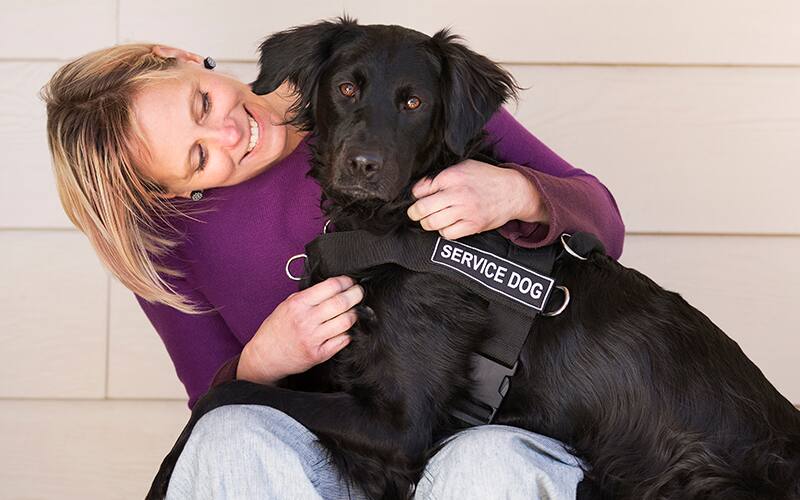
By: Elliot Blake, Manager, Sitting Volleyball and USAV National Referee and Scorer
Editor’s Note: the latest Rules Interpretations addresses service animals in the bench area. This article provides background information for that ruling.
My dog Diesel is a butthead, but boy do I love him. He has a strange addiction to tennis balls, and I try to take him with me where ever I go. Diesel enjoys the car rides, whether its picking a kid up from marching band practice or going through the drive-thru for ice cream (for me) and a Pup Cup (for him). However, he does at times have issues with strangers, and this is why he is my butthead.
In the Paralympic world, we see service animals assisting athletes on a regular basis. Many athletes who have lost a lower limb use a service animal to help them balance as they stand on one leg, retrieve items when not wearing their prosthetic, or perform other tasks they are trained to. That is key: service animals are trained to perform a task.
The American with Disabilities Act (ADA) was first written into U.S. law in July 1991. Like all laws, it has gone through several updates, and the most recent version was published in January 2017. A common discussion regarding ADA is the use of service animals. What qualifies as a service animal? What certifications or identifications are required of service animals? Are Emotional Support Animals (ESAs) covered under ADA?
According to the government’s ADA website, as of March 15, 2011, under Titles II and III, only dogs are recognized as service animals (although there is a separate provision for miniature horses to serve as a service animal). The dog must be trained to perform tasks for people with disabilities. Examples include guiding people who are blind, alerting people who are deaf, pulling a wheelchair, alerting and protecting a person having a seizure, reminding a person with mental illness to take prescribed medications, calming a person with Post Traumatic Stress Disorder (PTSD) during an anxiety attack, or performing other duties.
Of course, some people claim their dog is a service animal when they really aren’t. This includes ESAs not covered by ADA. In determining if a dog is a true service animal, there are only two questions that may be legally asked: is the dog a service animal required because of a disability, and what work or task has the dog been trained to perform. The individual may not be asked to reveal their disability, to provide medical documentation, to provide special identification or training documentation for the dog, or to ask that the dog demonstrate its work or task.
Think about our role as referees. We are not facility managers, we are not tournament directors; we have no jurisdiction over the facility. Our job as independent contractors is simply to facilitate the volleyball match. Nowhere in the Domestic Competition Regulations does it state we are to prohibit a service animal in the bench area to support a team member. Consider the dog’s possible job. If it is there to recognize the scent of a PTSD episode or oncoming anxiety attack, wouldn’t we want the dog there to help calm the individual down and prevent an unsportsmanlike sanction?
If there is a true concern about a dog’s behavior, notify the tournament director or facility manager and allow them to follow the necessary laws and guidelines pertaining to service animals. We should not be taking any action that would discriminate against the individual from being actively involved in the event. Rather, we should welcome and show kindness to all.
Just remember we’re not supposed to pet service animals.
Please follow the adventures of my butthead Diesel on Instagram (@diesel_puppy_dawg).

